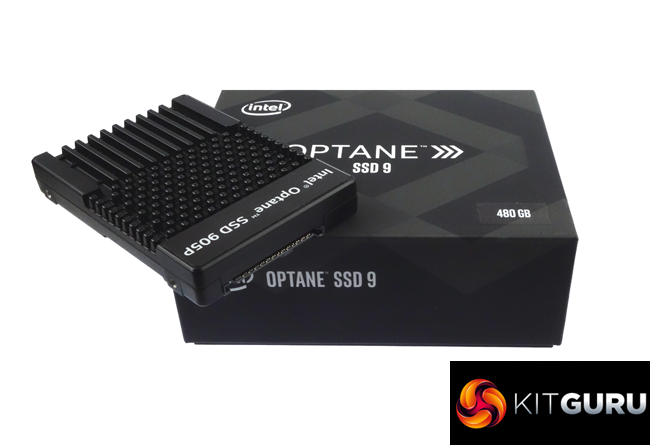To quote from Intel's product brief for the Optane SSD 905P “The SSD 905P is designed for the most demanding storage workloads in client systems, delivering high random read/write performance coupled with low latency and industry-leading endurance”. The thing about the Optane series of drives is they deliver those high random read/write figures at low queue depths thanks to Intel's 3D XPoint memory.
Intel's 3D XPoint memory has been designed to perform at a consistently high level at very low queue depths; QD1 – QD4 and at low latencies. The point about these low queue depths is that it's at these depths where the vast majority of workload activity occurs in everyday usage.
Another advantage of 3D XPoint over standard NAND drives becomes apparent after the drive has been in normal operation for a time. Normally a NAND based drive will perform the best when it's new but after cycles of having data written and re-written to it, the performance starts to drop away. This doesn't happen with the 3D XPoint Optane drives, the performance remains consistent.
When it comes to performance, the Sequential speeds of the SSD 905P are good but not great in comparison with other NVMe SSD drives we have looked at … but then again superfast Sequential performance isn't really what the drive is about. Using the ATTO benchmark we got a score of 2,776MB/s for reads and 2,464MB/s which is a little quicker than the official up to 2,600MB/s for reads and up to 2,200 MB/s for writes. However, both of these scores are way off the performance of WD's Black NVMe drive, which has the fastest Sequential read/writes for a consumer drive we've seen to date.
So then what about the 4K random performance at low queue depths? A glance at 4K read/write scores in CrystalDiskMark shows this emphasis on low queue depths quite nicely. At a QD of 32 the SSD905P sits third in the table of tested drives, quite a way behind the fastest drive in this benchmark, the Plextor M9Pe(Y). However, once the drive drops to testing data at a QD of 1, the difference in 4K read performance against standard NAND equipped drives is, to say the least, startling and very, very impressive. With a read score of 268.8MB/s, it's some three and a half times faster than the nearest standard NAND equipped drive, Intel's own SSD760p.
In our IOmeter random read tests we tested at QD's 1,2, 4 and 32, the SSD 905P trounced all the other consumer drives we have tested in QD's 1,2 and 4 although the tables were turned at QD32 when a standard NAND drive, Samsung's SSD970 PRO regained the top spot.
When it comes to the drives endurance, forget about a TB TBW figure, the SSD905P's endurance figure is quoted in petabytes, yep 8.76PB to be exact, which works out to be around a massive 5TB of writes every day for the length of the 5-year warranty. That alone is a huge selling point for data intensive situations.
We found the 480GB Optane SSD 905P on Span.com for £630 (inc VAT) HERE
Pros
- Stunning random read performance at low QD.
- Astonishing endurance.
Cons
- Sequential performance isn't as impressive as the random read.
- Expensive.
Kitguru says: Intel's Optane SSD 905P offers exceptional random read performance at the low queue depths where the vast majority of everyday workloads occur and has incredible endurance but it all comes at a rather large stress to the wallet.
Be sure to check out our sponsors store EKWB here
 KitGuru KitGuru.net – Tech News | Hardware News | Hardware Reviews | IOS | Mobile | Gaming | Graphics Cards
KitGuru KitGuru.net – Tech News | Hardware News | Hardware Reviews | IOS | Mobile | Gaming | Graphics Cards




